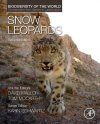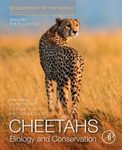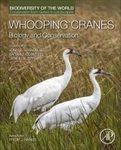About this book
Snow Leopards, second edition provides a foundational, comprehensive overview of the biology, ecology, and conservation of this iconic species. This updated edition incorporates all the recent information from range-wide surveys and conservation projects, the results of technical and advances particularly in genetics, camera trapping and satellite tracking, and evaluates emerging threats. New chapters synthesize the novel scientific methods and statistical analyses used to develop density and population estimates and how they inform conservation and management estimates. The first section of the book covers historical information, the main biogeographic patterns, evolutionary trends, conservational efforts, and cultural significance. Status and distribution are fully updated for all 12 countries where snow leopards occur. A section describes established and emerging threats, including human-wildlife conflict, illegal trade, infrastructure development, and climate change along with the conservation solutions used to address these threats. The book concludes with a final section on global snow leopard initiatives and future potentials. Snow Leopards, Second Edition features contributions from over 200 international experts on the species, bringing experience and expertise on all aspects of the snow leopard from every part of its range. The book is a key resource for scientists, researchers, government agencies, managers, and anyone with an interest in the conservation of the snow leopard and the high mountain ecosystems it occupies.
Contents
I: Defining the snow leopard
1. Taxonomy, morphology and phylogeny
2. Behavior and ecology
3. Biogeography and status overview
4. Prey and diet
II: Conservation concerns
5. Livestock predation: conflicts and solutions
6. Depletion of wild prey
7. Monitoring illegal trade
8. Climate change impacts
9. Diseases of wild SL and primary prey
10. Resource extraction
III: Conservation solutions in situ
11. Role of mountain communities
12. Building community governance structures and institutions
13. Incentive and reward programs
14. Livestock husbandry
15. Religion and cultural impacts
16. Trophy hunting as a conservation tool
17. Environmental education
18. Law enforcement
19. Transboundary initiatives
20. Corporate business
IV: Conservation solutions ex situ
21. Captive SL in the EAZA region
22. The SSP in North America
23. Role of zoos in SL conservation
24. Rescue and rehabilitation centers and reintroduction
25. SL research: a historical perspective
26. From VHF to satellite GPS
27. Role of genetics
28. Camera trapping: advancing the technology
29. Landscape ecology: linking landscape metrics to ecol. Processes
VI: Status and Conservation: Regional review
30. Afghanistan
31. Kyrgyzstan
32. Kazakhstan
33. Tajikistan
34. Uzbekistan
35. Bhutan
36. India
37. Nepal
38. Pakistan - historical perspective
38.1. Pakistan - current status
39. Mongolia
40. Russia
41. China: Tibetan Plateau Sanjiangyuan region
42. China: current status
VII: The future of snow leopards
43. Sharing the conservation message
44. Global strategies for SL: a synthesis
45. GSLEP
46. Joining up the spots
47. Future prospects for SL survival
Customer Reviews
Biography
Dr. David Mallon is not only a recognized expert on snow leopards, he is extremely knowledgeable on the conservation status of Central Asia as a whole. He conducted some of the early assessments of the status of snow leopards in Mongolia and has done surveys in many of the Himalayan range states. He has more than 25 years of field work experience in the Himalaya, Tibetan Plateau, Mongolia, Central Asia and Arabia, mainly focused on large mammals, and involving species surveys, biodiversity assessment, habitat assessment, camera trapping, training, capacity building, and training local partners in census and monitoring techniques. He is a Fellow of the Royal Geographical Society and the Zoological Society of London, as well as a member of the International Editorial Board for Oryx, the International Journal of Conservation. He has been a Steering Committee member of the Snow Leopard Network since its inception in 2003 and is currently the elected Chairman of that 400 member organization, which represents nearly every biologist and conservationist now active in the snow leopard world. He is highly respected among his peers as an expert on this cat.
Dr. Tom McCarthy, Panthera's Director of Snow Leopard Programs, began his conservation career studying brown bears, black bears, mountain goats and caribou in Alaska in the early 1980s. A strong interest in international conservation led him to Mongolia in 1992, where, under the guidance of Dr. George Schaller (known as "one of the founding fathers of wildlife conservation), he took over the management of a long-term snow leopard research project. He was the first biologist to use satellite radio-collars on snow leopards. McCarthy became the Science and Conservation Director of the Snow Leopard Trust in 2000 and has since led their extensive science and community-based conservation programs across much of snow leopard range in Asia. From 2002-2009, Dr. McCarthy served as Executive Director of the Snow Leopard Network, a global consortium of more than 200 professionals involved in snow leopard research and conservation. Among other research initiatives, Dr. McCarthy is leading both a range-wide assessment of snow leopard genetics that seeks to identify movement corridors which are critical to maintaining the health and genetic diversity of the species, and a revision of methods by which snow leopard populations can be monitored over time, including such novel non-invasive approaches as fecal genetics, camera trapping and statistical modeling based on sign surveys.





































